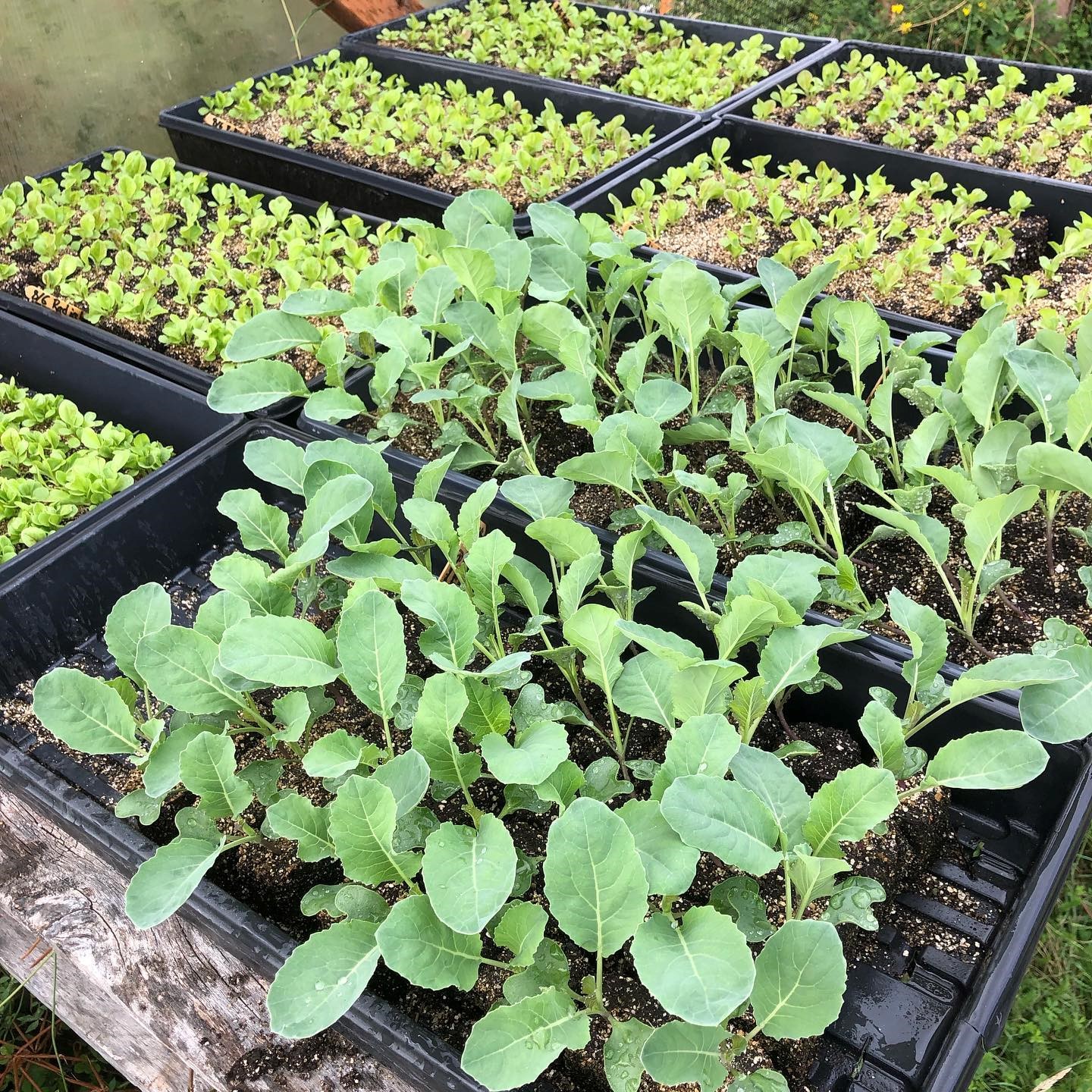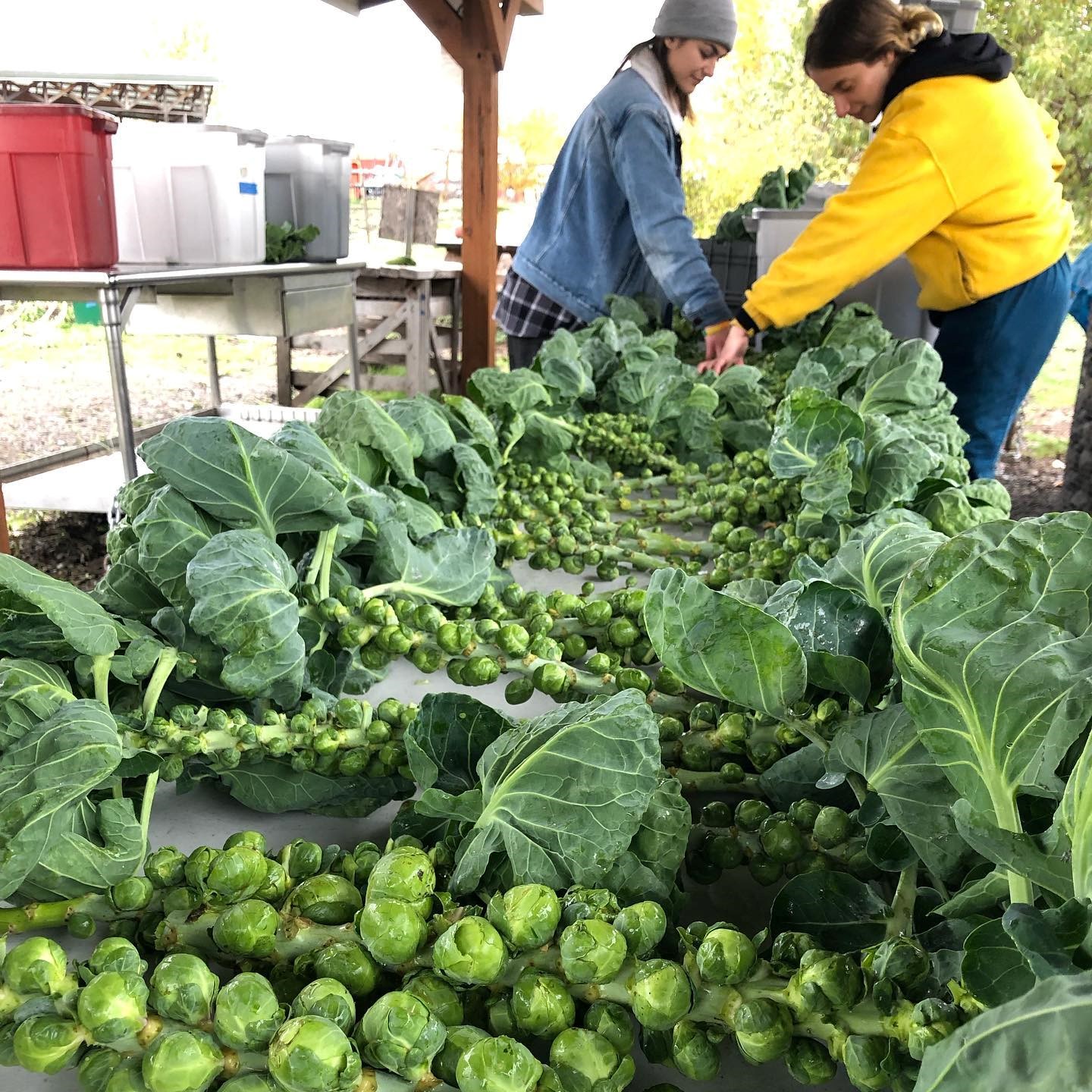UW Farm Weekly Dirt: Selecting Plants and Seeds for Your Fall (and Winter) Urban Farm or Garden
 With September’s arrival, so begins our thoughts of fall on the farm: swiftly flipping beds from one crop to the next to capture the last warm days and kick start our fall crops, transplanting others for over wintering, choosing garlic varieties for planting in October, and gearing up for the cover crop season.
With September’s arrival, so begins our thoughts of fall on the farm: swiftly flipping beds from one crop to the next to capture the last warm days and kick start our fall crops, transplanting others for over wintering, choosing garlic varieties for planting in October, and gearing up for the cover crop season.
At the UW Farm, preparations began in July with a wave of soil blocking. We started cold tolerant crops: broccoli, bok choi, Brussels sprouts, cauliflower and cabbage. Recently, we sowed spinach in empty beds where we had just harvested beets for the CSA. Soon we will plant more arugula and mustards, and perhaps a second succession of Swiss Card.
Experienced farmers and gardeners began preparations for fall production mid-summer, but west of the Cascades, we have relatively warm weather all the way until mid-November. That means – it is not too late to launch your plans for extending the season and getting crops in the ground that will provide fresh vegetables for the months ahead.
A quick way to get the garden going is by getting seeds that can be started in July for transplanting in August, or by finding starts that are cold tolerant and/or hardy. These plants also do well started in late winter/early spring.
Transplants or Starts for Fall and Over-Wintering*
- Broccoli
- Cauliflower
- Cabbage
- Kohlrabi
- Brussels Sprouts
- Radicchio
- Onions, such as Walla Walla Sweets
- Scallions or Green Onions
- Leeks – (neutral or intermediate day) such as ‘bandit,’ ‘talon’
- Kale
- Collard Greens
- Green Onions – ‘red baron’ and ‘evergreen hardy white’ do well
- Onions – ‘ailsa craig’ and ‘walla walla’ are large onions that sweeten over the winter,
*To over-winter crops, creating a low tunnel or mulching heavily helps to protect plants if temperatures are below freezing.
Sowing seeds for varieties that can be planted directly in the soil and which germinate well in cooler temperatures (<70 degrees) is another way to fill-out your beds.
Varieties for Direct Seeding in Fall
- Spinach
- Mustard Greens
- Salad mixes
- Arugula
- Beets
- Radishes
- Turnips
- Parsnips (these will need to overwinter to reach optimum size if sown in September)
- Garlic
- Shallots
 Other fall routines at the UW Farm are seeding cover crops in beds that will be empty, and adding compost to the soil. Compost needs time to break down before nutrients are available, so fall is a good time for spreading those organic materials.
Other fall routines at the UW Farm are seeding cover crops in beds that will be empty, and adding compost to the soil. Compost needs time to break down before nutrients are available, so fall is a good time for spreading those organic materials.
Below are links for excellent resources to continue your learning about fall farming and gardening:
Deep Harvest Farm
Swansons Nursery
The Old Farmer’s Almanac
Cover Crops for West of the Cascades